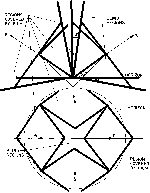
Figure 1: Prairie Network
Click on Thumbnail to see Full-size image.
The standard exposure is three hours so that three to four frames are produced each night. Operation of the camera is controlled by photosensitive switches that turn the system on at twilight and off at dawn. To prevent fogging by moonlight or other bright sky conditions, each camera is equipped with both a neutral density filter and a diaphragm activated by a photometer.
Other features insure the proper exposure and recording of time intervals of meteors having a photographic magnitude greater than Mpg = -6.
Stellar magnitudes are stated on a logarithmic scale. A difference of five magnitudes corresponds to a ratio of brightness of 100. Because the astronomers traditionally have referred to a bright star as being of "the first magnitude," and less bright stars as being "second magnitude" or "third magnitude" stars, the sign given to a magnitude is inverse to its brightness. An object of MV -1 is, by this convention, 100 times brighter than an object of MV +4 (a difference of five magnitudes). Magnitudes of some familiar heavenly bodies are: sun -26.72; full moon ~-12; Venus -3.2 to -4.3; Vega +0.1; Polaris +2.1. The faintest magnitude visible to the normal, unaided human eye is about +6.
Photographic (Mpg) and radar (Mrad) magnitudes are related to visual magnitudes by coefficients which are functions of the wavelength of the radiation as well as the characteristics of the detector.
Although a meteor may be recorded by more than two cameras or stations, only two views are necessary to determine altitude, velocity, and azimuth. The two best views are those in which the line joining them is the most nearly perpendicular to the trajectory. Such stereo pairs will detect meteors at altitudes of 40-120 km. If the measurements indicate that the meteor may land in a region relatively
Exposed film from one-half of the stations is collected every two weeks and scanned at field headquarters in Lincoln., Neb. The rate of acquisition of film is ~500 multi-station and ~500 single-station meteors per year. Frames with meteors from one station are cut out of the film strip and a search is made for views of the same event taken at other stations. The assembled events are then sent to Cambridge, Mass. for measurement. It is necessary to measure the length of every interval on the meteor track produced by the shutter, the positions of about forty stars, and to make densitometric measurements of the trace.
One of the most important functions of the network is to facilitate recovery of meteoritic material. The network's design is adequate to provide an "impact error" of 100 meters for the "best determined objects." But such accuracy fails to guarantee recovery because the object of search is nearly indistinguishable from the more common field stones. One recent search occupying 150 man-days resulted in no recovery. Since the start of the project some 500 man-days of search have yielded no recoveries.
In contrast, the Canadian "network," which was not yet in operation by June 1968, has already recovered at least one meteor by careful and extensive interrogations of persons who had witnessed meteor falls. Similarly, in Czechoslovakia, four pieces, out of the many which make up the Pribram meteor, were recovered before the impact point had been determined from data obtained by a simple two-station system not designed for this purpose.
4. Evaluation of the Prairie Network
Colorado project scientists attempted to evaluate the usefulness of the Prairie Network as an instrumented system for UFO searches. A list of UFO sightings dating back to 1965 that occurred within the network limits was presented to the supervisor of the field headquarters in Lincoln, Neb. He was requested to produce those plates which might conceivably have been able to photograph the objects which gave rise to the sightings. Information supplied to the supervisor was deliberately limited to case number, year, month, day, time, city, duration, direction, and location. Duration of the sighting was given in minutes. Direction in the sighting reports referred either to the direction in which the observer was looking, or the direction of motion of the object. Location was specified by the coordinates of an atlas. Presenting the information in this form avoided biases based on preconceptions and placed more emphasis on the immediate environs of the sighting point. The assumption that an UFO was in the immediate neighborhood of the sighting was made so as to combat any tendency to attribute sightings to distant objects, that is, to astronomical bodies.
A map was prepared for each case (see Fig. 2) and each film scanned for exceptionally bright objects and planes or satellites. Tracks of bright meteors were never seen because the films on which they appeared had been sent to Cambridge, but the azimuth, elevation, and trajectory of these meteors were available and correlated with the sighting report. Angular positions of bright objects were roughly determined by means of a template.
Not operating (NO): cameras do not operate before
dusk or after dawn and they sometimes malfunction or run out of film.
Meteor (M): a fireball with a known trajectory
computed by its film tracks at several stations.
Overcast (O): this applied to cases where two nearby
stations were so overcast that no star images showed, and where there
was little information on films from more distant stations.
No information (NI): this classification was used
when the report failed to state the direction in which the observer
was looking or the direction in which the object was moving, or both.
No conclusion (NC): the report information was so
fragmentary that no correlation between the objects on the photograph
and those reported, was possible, or the films gave no information
which could confirm that an object was seen.
Inconclusive identification (II): if the
photographic evidence showed the presence of a body which could have
been responsible for the sighting with a fair degree of probability,
the case was called inconclusively identified.
Conclusive identification (CI): when description in
the visual report was confirmed with a high degree of probability in
all characteristics, the case was considered to be conclusively
identified.
The following rules were adopted:
The sighting identified conclusively as a meteor was made by a couple
who were driving north on Highway 281, six miles north of Great Bend,
Kans., at 2200 CST. They reported that they saw "... a flash or burst
of fireworks above car, not unlike the usual Fourth of July
fireworks, except that this was much larger and much higher. The
fireworks or sparkles were varicolored and out of them emerged a
disc-like object about the size of an ordinary wash tub. The object
was as red as fire, but it appeared solid with a very definite, sharp
edge ... and traveling at a tremendous speed. Its direction was
north-northeast and in a straight line ... It did not require more
than five seconds to reach a distance that made it invisible ..."
Two phrases in this statement needed clarification: "above us" and
"its direction was north-northeast." The observer explained that
"above us" meant "through the upper part of the windshield." He said
that his (and his wife's) attention was called to the object by the
flash of the burst, which they saw just to the west of north, and it
vanished while still slightly west of north. He insisted that the
object was traveling north-northwest, explaining the correction by
saying that he often confused west with east. He was therefore
certain that it could not have been on the NW to SE course determined
from the photographic data, and that it was not a meteor because it
was rising, not falling. Questioned as to the time, he said that
10:00 P.M. was approximate and that the duration of the sighting was
short, probably less than the five seconds referred to.
Six stations of the Prairie Network photographed a meteor at about
10:10 P.M., determined that it passed over Republican City, Neb. at
an altitude of some 50 km., and predicted that its point of impact
was near Downs, Kans. Republican City lies a few degrees west of
north from the sighting point at a distance of about 177 km., and
Downs
The observer's impression was that the object was rising. This would
be expected if it were approaching him at a constant altitude. His
strong feeling that it was on a northerly course, and therefore
receding, is explained by recalling the very short time during which
he saw it.
Considering the general agreement as to time, elevation and region of
viewing, the probability is high that the object seen was the meteor
photographed.
The second case was labeled inconclusive because, in spite of the
paucity of information available about it, there was a relatively
close agreement between the time of the sighting (0001 CST, 26
January 1967) and the time of a meteor recorded on three network
stations (2341:51 CST, 25 January 1967). The discrepancy of only 18
minutes leads to a probable identification of the sighting as the
meteor, but the identification cannot be made conclusive.
A striking example of the lack of correlation that can occur between
a familiar object and the interpretation of a sighting is related in
the case where a large, helmet-shaped, luminous body appeared
overhead from behind a cliff. The observer was driving west. He
reported that the object stayed nearly overhead for 45 min. until it
disappeared behind a hill to the southwest at an altitude of about
40°.
Network photographs show the moon moving from 245° to 270° at
a starting elevation of 85° dropping to 45° Stars and a plane
also appeared on the film, but their positions did not tally with the
report.
Neither the observer nor the Air Force interviewer mentioned that the
moon was visible, but the conclusion appears to be inescapable that
the object seen was the moon. A summary of the results of this study
are presented in Table 2.
The network's identification of 18% of all sightings with a fair
degree of probability, does not constitute as poor a performance as
might be thought since 34% could not be recorded because of overcast
and 43% were so deficient in information that, even if an object had
been recorded by the film it would have been impossible to correlate
it with the sighting.
In 1923, Dr. W.H. Pickering called attention to the possibility that
undiscovered small natural earth satellites might exist. In 1952,
after a long period of searching for trans-neptunic planets and
"lost" asteroids, during which the planet Pluto was found, Dr. Clyde
W. Tombaugh began a search for small satellites which might be in
circular geocentric orbits having radii between 5,000 and 26,000 mi.
In searching for small, high-velocity bodies having a luminance close
to the photographic threshold, it is essential to avoid "trailing";
that is, the image must be kept stationary with respect to the film.
For example, if a star image 0.04 mm. in diameter trails over the
emulsion for a distance of 10 mm., its brightness at any point will
be diminished in the ratio 0.04/10.0 = 1/250 times. The resulting
trail image may be below the film's threshold. Therefore, Dr.
Tombaugh's experimental method was based on searching the surfaces of
a large number of spherical shells, each concentric with the earth.
The angular velocity of the search in each shell was made equal to
the angular velocity a body moving in the gravitational field of the
earth would have at a geocentric distance equal to the radius of that
shell. (Tombaugh, 1959).
The project was terminated at the end of June 1956. The number of
concentric shells searched was over 100, resulting in a collection of
13,450 photographs. A few dozen possible natural satellite images
having photographic magnitudes lying between +16 and +14 were found
and attempts were made to recapture them by repeatedly photographing
the shells in which they occurred, but with no success. The
conclusion is that these images were either film defects, very small
asteroids in elliptical orbits around the sun, or natural satellites
in elliptical, rather than circular, orbits around the earth.
As a by-product of this project, a search for moon satellites was
made during the lunar eclipse of November 1956. Three telescopes,
monitored by a sky photometer, produced a total of 25 plates,
recording point images down to about Mpg = +17. Some 500
candidates were found in the region between the moon's surface and a
lunicentric distance of 37,000 miles, but none survived a detailed
analysis.
A program of visual observation for nearby objects at very low
latitudes began at the end of 1955 and continued through 1958. The
equatorial plane, at distances between 600 and 2,500 miles from the
surface of the earth, was searched with a twelve inch Newtonian
reflecting telescope and 10 X 80 binoculars. The telescope had a
limiting visual magnitude of +11 at 100 miles and +13 at 2,400 miles,
while the binoculars could detect objects of MV = +8 at 100 miles
and of MV = +9 at 2,800 miles. No satellites were seen. In the
words of the report:
It is most unlikely that any objects larger than two feet in diameter
at an altitude of 100 miles or twenty feet at 2,500 miles as seen by
binoculars, and several inches at 100 miles or three feet at 2,500
miles as seen
The method used by Dr. Tombaugh, while admirably suited to orbiting
bodies, is not appropriate for the observation of aerial phenomena
that are not constrained in circular orbits. If their distances from
the cameras were large they would not be detected due to the effect
of trailing. For this reason a search on satellite survey films for
reported UFOs was not attempted.
Photometry of the night sky is carried out by means of
photomultipliers which sweep out circles parallel to the horizon
(almucantars) at various zenith angles Z (Z = 90 ° - altitude).
Photometers used in airglow studies have a 5° field and sweep at
the rate of 10°/sec horizontally and 5°/sec vertically. A
"sky survey" consists in making 360° sweeps at each of six zenith
angles as follows: scanning clockwise at Z = 80° at the rate of
10°/sec, counter-clockwise at Z = 75° at 5°/sec and
repeating the process at the same rate at Z = 7° 60°,
40°, and 0°. A survey requires 4.1 min. Often a series of
surveys is made using different filters depending on the nature of
the investigation.
The output of the instrument consists of pulses, the amplitude of
which is proportional to the intensity of the light sensed by the
photometer. In older models the output is recorded analogically by a
pen on paper tape. Since the distance along the length ("x" axis) of
the tape is proportional to the time of the scan, it is therefore an
indicator of the azimuth and zenith angle of the light source
represented by the pulse. Data are analyzed by measuring the height
of pulses of interest ("y" axis) and determining their azimuth at
each zenith angle. This measurement is done manually or in the new
model, by recording the coordinates directly on machine-readable
magnetic tape.
Bodies brighter than MV = +3 can readily be identified by
their angular coordinates coupled with pulse height which is a
measure of their magnitude. In practice, however, identification is
rarely carried out because investigators of airglow and zodiacal
light are interested in diffuse light phenomena rather than in single
bright objects.
The sky coverage of the photometers is large since they can be made
to scan an entire hemisphere as in the case of the all-sky cameras.
The fact that they do not do so in the same short period of time as
the cameras is not very important since at large distances the linear
sweep speed approaches the velocity of light. Because their
observations are made over a longer period of time and their angular
data is recorded over a very much larger area, they have a greater
resolution; azimuth and altitude are presented more accurately and
the direction of motion is non-ambiguous.
Colorado project scientists thoroughly searched two such photometer
sky surveys. The first search was made on an airglow survey chosen at
random and the results are summarized in section 7 of this chapter.
The second search was prompted by a visual sighting by three trained
persons of a bright object in retrograde (E to W) motion during the
operation of a zodiacal light photometer.
Scanning photometers can also sense different colors on separate
surveys. The instrument's ability to measure the degree and direction
of polarization can also aid in determining whether the object is
self-luminous or its light is reflected. For these reasons, and
because of their relatively extensive sky coverage, scanning
A search was made of the taped output of an airglow photometer survey
recorded around midnight, Hawaiian Standard Time (HST), 11-12
February 1966 in order to see if all bright objects could be
identified as stars or planets. This survey was chosen at random from
a sample of surveys made under particularly good conditions, that is,
on nights during the dark of the moon with the minimum interference
from clouds. The taped data, consisting of brightness as a function
of azimuth, was plotted by machine in two ways, the first showing the
raw data which included light from all sources, and the second, the
raw data from which the background of zodiacal light, Milky Way and
integrated starlight had been subtracted. On both plots, individual
stars and planets stand out as narrow pulses, their height being
proportional to their apparent magnitudes. The brightness is measured
in terms of the number of 10th visual magnitude stars per square
degree of sky, that is, in "S[10](vis)" units.
The observations of that night were made through three filters
successively: 6300 ± 5 Å, 5577 ± 5 Å and
5300 ± 25 Å. As each survey through each filter requires
about four minutes, successive sweeps at the same zenith distance
through the same filter occur at ~15 min. intervals, and one sweep
at, say Z = 80°, will be followed by a sweep at Z = 75° about
36 seconds later and repeated at the same altitude about 15.5 min.
later.
No stars or planets showed up in the surveys through the 6300 Å
and 5577 Å filters, but probably because of its broader
band-pass, many more appeared when the 5300 Å filter was used.
In this survey, all star pulses greater than MV = +3 were
accounted for by reference to a star atlas, except for two. These
have been designated as Unidentified Bright Objects (UBO), having the
coordinates given (see Figs. 3 and 4) below (see also Figs. 5 and 9
[5 & 6]).
From the recorded values of the angles, if the two pulses were made
by one body, it moved an angular distance of
If the errors are in phase, then, maximally:
and minimally
The fact that the UBO appeared on only two sweeps out of many surveys
may be interpreted to mean that it vanished in the shadow of the
earth at z = 75°. This situation is shown two-dimensionally in
Figs. 5 and 9 [3 & 4].
In Fig. 5, which is a view of the earth, looking toward the southern
hemisphere, Haleakala (21°N) lies on the earth-sun line at 2400
HST, and the edge of the earth's shadow is parallel to it. In the
first approximation, the distance d from Haleakala to the shadow line
in an easterly direction is
and
OBnom = 6469 x 0.1134 = 734 km.
OBmax = 6469 x 0.2240 = 1449 km.
OBmin = 0 km.
Vnom = 48.9 km/mm nom
Vmax = 96.6 km/mm max
Vmin = 0km/mm
These velocities should be compared with those of the UBO in
Haleakala II, that is, ~142 mi/min = ~228 km/min. If the UBO was in
orbit, the distance GB is the projection of its path SB making an
angle Beta with the line of sight. Assuming that the velocity in
Haleakala II is typical, then
and the object was in a highly elliptical orbit. Alternatively, the
distance OB might have been the projection of the apogee of the
ballistic trajectory of a body launched in a retrograde direction.
Investigation showed that no sub-orbital missiles were launched from
Vandenberg AFB or Pt. Mugu until one or more hours after this
sighting. The Aerial Phenomena Office at Wright-Patterson AFB
suggests that it might have been an artificial satellite on which
information is not readily available. The object is thus in the
unidentified category.
On 10-11 September 1967 three observers at the Haleakala Observatory
who were operating two scanning photometers saw a bright object move
from NE to W at a low elevation. The paper tape outputs of each
instrument were examined; the airglow photometer was operating with
red filters and did not record anything which stood out against the
background, but the zodiacal light photometer detected the object
four times through a 5080 ± 30 Å filter. Other prominent
astronomical features, such as Eta Canis Majoris, labelled
nCMa, were readily identified. The
characteristics and operation of this photometer are somewhat
different from the one used in airglow measurements. Its field is
3°; its sweep rate is 2°/sec; and almucantar increments are
1°. Because the focus of attention is the brightness of the
zodiacal light a few degrees on each side of the plane of the
ecliptic, the sweep was restricted to 160° starting from 0°T,
each sweep being completed in 80 sec.
The survey in which the UBO appeared began at 0419 HST and ended at
0451 HST, on 11 September. The tape record is reproduced in Fig. 8
[Fig 1] and the data summarized in Table 3.
The object was identified as OP 8038, a sub-orbital missile, which
lifted off Vandenberg AFB at 0425 HST. The great circle distance, d,
between launch and observation points, is calculated from the rough
coordinates:
and that by the time the object vanished, it had travelled a great
circle distance
Click HERE
for editors' note on Haleakala figures.
The use of radar has spread into many diversified fields since its
introduction as an aircraft-tracking instrument at the beginning of
World War II. One of the first non-military uses it was put to was
tracking weather balloons. Not long after, it was discovered that,
given the proper wavelength, radar could detect clouds and the
position of rain and hail in storms. Since then its use has extended
to tracking satellites, investigating the atmospheres of several
planets in the solar system, including our own, determining the
trajectory of meteors and predicting their points of impact and
studying lightning and violent storms (Battan, 1962).
In general, radar provides information for determining the velocity,
range, elevation and azimuth of the reflecting objects in its field
of view. Indirectly, it will furnish some data on the state of the
matter which is backscattering (reflecting) radio energy; other
variables such as temperature and index of refraction can sometimes
be inferred.
The resolving power of radar, defined as the minimum distance between
two objects (or two parts of one object) necessary to make them
appear separate, is poor. Details of the shape of the reflecting
object and other features can never be determined except in the most
general way and only when the object is very much larger than the
radar wavelength. Rayleigh's criterion states, essentially, that in
order for two objects to appear separate, the wavelength of the
electromagnetic radiation that illuminates them must be of the same
order of
The range resolving power of radar is also dependent upon pulse
duration. The limit of resolution in the direction of propagation is
half the linear dimension of the pulse because at intervals less than
that the echo formed by the leading edge of the pulse reaching the
more distant object overlaps the echo formed by the trailing edge of
the pulse returning from the nearer object. Thus, if the radar is
"looking" at two objects in its "line of sight," and if its pulse
duration is 1 µsecond, it will not display as separate from each
other, in-line targets whose ranges differ by less than 500 ft.
Radar reports information in three coordinates: range, elevation, and
azimuth. The resolving power in the range coordinate is determined by
pulse duration. Resolving power in elevation and azimuth depend upon
the same conditions that apply to optical resolution. Rayleigh's
criterion for the optical resolution of a telescope can be used for
this purpose, if the radar antenna is circular and its diameter is
regarded as its aperture. Resolving power is proportional to the
ratio of the wavelength to aperture (diameter). This is another way
of saying that the ratio determines the angular beam width of a radar
transmitting-receiving antenna. Resolving power is determined for
this case by the equation
where Lambda is wavelength, D is antenna diameter, and
70°(= 1.22 rad.) is the angular size of the diffraction
disc image of a point source for unit Lambda/D ratio as derived by
Rayleigh. (For other than
Radar is frequently able to see targets virtually undetectable by the
unaided eye or on photographic film. This greater sensitivity is due
to marked differences in the signal-to-noise ratio of wavelengths
employed by radar compared to the optical wavelengths upon which the
eye and the camera must rely. The atmosphere is almost completely
transparent to radar wavelengths between 3 cm. and 10 cm. It scatters
such waves hardly at all. At optical wavelengths, it is still
relatively transparent, but air scatters energy appreciably,
especially at the short (blue) wavelengths (Rayleigh scattering):
hence, the blue sky. In addition, unlike the radar case, there is a
powerful source of optical noise present in the daytime sky -- the
sun. Thus, a pale blue object seen against the sky is nearly
invisible to the retina or to photographic film, yet if constructed
of metal, the object will reflect radar waves strongly.
Design of a radar to track targets very much smaller than the
wavelength takes into account that for a given wavelength,
backscattering power varies as the sixth power of the target size
(Rayleigh's Law of Scattering) and, conversely, for a given target
size the power varies inversely as the fourth power of the
wavelength. Furthermore, atmospheric attenuation of the beam
increases as frequency increases. The balancing of these factors
results in the choice of a 10-20 cm. wavelength for radar which are
to survey extensive storms such as hurricanes; 3-10 cm. for tracking
metallic objects; and 1-3 cm. for studies of rain and hail
distributions (Battan, 1959).
Anomalous reflections called "angels" can sometimes be ascribed to
certain atmospheric conditions. Temperature inversions cause rapid
changes in the index of atmospheric refraction at the interfaces of
the layers and such changes can give rise to radar echoes exactly as
similar conditions account for mirages in the case of visible
wavelengths. (See Section III, Chapter 5 and Section VI, Chapter 5.)
As would be expected from Maxwell's equations, radar echoes will be
produced by regions of high ionization where there is an appreciable
density of free charges. This is the reason why lightning paths are
visible to radar. The density of charges in the trail of a meteor is
different from that in the immediately surrounding space, and the
radar echo arises from this difference in space charge, not by
reflection from the nucleus of the meteor itself (Lovell, 1954).
Depending upon the magnitude of the radar "cross-section" some
"angels" can be ascribed to echoes from birds or even insects.
"Cross-section" is better defined as the ratio of the reflected power
per unit solid angle to the incident power density; in other words,
it is a measure of the effectiveness of the target in reflecting
radiation and will have a different value for each wavelength.
Inasmuch as birds and insects are usually smaller than radar
wavelengths, their actual dimensions cannot be measured, although
their radar cross-section can be (Glover, 1966). This quantity, for
several species of birds and insects is tabulated below as a function
of radar wavelength:
The radar return does, however, contain information which provides a
basis for identifying an unknown point target as a bird ...
The sky coverage of these radars is obviously less than that of the
airglow photometers since they are limited in their choice of
elevation and they have only a 2° sweep width.
The photographic program which has been carried over the last few
years consists in taking one scope picture of one sweep every 15 min.
in times of clear weather and more frequently when storms were
developing. These films are available for inspection, but the
Colorado project
The main lobe of the radiation pattern from the two transmitting
antennas is inclined upward at 45° and has a half-power
horizontal width of ~20° and a half-power vertical width of
~11°.
Pulses of 6 µsec. duration are emitted at the rate of about 1300
per second, so that the echo from an object 200 km. distant will
return within one pulse cycle. An object in the beam at 200 km. will
be about 140 km. above Decatur, Ill. The Havana radar is thus
designed to scan approximately the same volume of sky monitored by an
image orthicon located at Sidell, (near Urbana) Ill. (see Section
12).
The radar will detect meteors as faint as
mrad = +13 for counting purposes, and
mrad = +11 and will acquire echoes from
3,000-4,000 meteors/hr.
The system is capable of receiving echoes from objects at almost any
distance from the transmitter. In order to limit the information to
"suitable" meteors, meteor-recognition logic has recently been
installed which filters out extraneous signals such as those from
aircraft. These echoes are, however, visible on the monitoring
oscilloscopes and are characterized by a persistence greater than
that of meteors. Data pertaining to "suitable" echoes is recorded on
magnetic tape. Similar, but unfiltered data is simultaneously
recorded on film (Smithsonian, 1966).
During 1967, many non-meteoritic echoes were seen on the
oscilloscopes and recorded in the Havana log book. Using the film
record, the Colorado project sought to determine how many of the UFOs
sighted during 1967 in a radius of ~140 km. from Havana, had resulted
in an
The ninth object is the one that the image orthicon recorded in a
test run on November 7th, 1967 at 2330±3 m. It was
subsequently identified as a fireball. No simultaneous radar sighting
was made because the radar was not in operation.
One of the important problems in meteor physics is the
crosscorrelation by simultaneous radar and optical meteor
observations of ionization and luminous efficiencies as functions of
velocity.
The development of the image orthicon has made such cross-correlation
studies feasible. The instrument is a conventional vidicon television
camera modified so as to increase its sensitivity. This is achieved
by adding an image intensifier ahead of the scanning mechanism in the
camera. The result yields a sensitivity equivalent to an ASA rating
of 100,000. Such extreme sensitivity permits detection of meteors
having a limiting magnitude of about +7. This is well within the
equivalent Mrad range detectable by radar, and
considerably superior to the capability of any photographic system
except the 48 in.
The image orthicon site in Sidell, Ill., about 35 mi. SE of Urbana,
was chosen by the Smithsonian Institution with two objectives in
mind. Using a lens having a 16° field (the optimum lens for
meteor surveys), the image orthicon is sited to survey approximately
the same area of sky over Decatur as that covered by the 20° beam
of the Long Branch radar (see previous section). But whereas the
radar is sited so as to track the meteor trails at about right
angles, the image orthicon is located so that its optical axis is
more nearly parallel to the meteors' paths.
Linked by microwave and radio, the radar and the image orthicon are
able to determine times within 10^-2 sec., thereby minimizing
ambiguities as to the identity of the objects observed.
As in conventional television, an 875-line scan samples the tube
target in two sets of sweeps of alternate lines, each requiring 1/60
sec. When the alternate sweeps are interlaced, flicker and resolution
are greatly improved. The electronic image is recorded on magnetic
tape and can be immediately played back for viewing on a monitor.
Used in this way, the high sensitivity of the image orthicon permits
the acquisition of moving aerial objects that would be undetectable
photographically because of the effect of trailing. Photographic
records of the monitor images can be recorded by a 35 mm. camera
operating at any desired frame speed.
The sensitivity of some image orthicons can be further increased by
operating them in the integrating mode. In this procedure, the
electronic image is swept away less frequently, thereby allowing the
photoelectron population due to ultrafaint images to build up. The
Smithsonian image orthicon has no provision for this technique, nor
does its camera permit the making of time-lapse photographs which are
preferable when the device is operating in the integrating mode
(Williams, 1968).
During 1967 there were nine sightings of UFOs within a distance of
~200 km. from Urbana. (These were the same sightings which were
The variation in the magnitude and direction of both the horizontal
and vertical components of the earth's magnetic field is of such
importance in geophysics that a network of some 240 geomagnetic
observatories have been deployed by several countries at stations all
over the globe (NAS 1968). Thirteen of these stations exist in the
continental United States and of these, three are situated on the
western edge of the Prairie and Weather Radar networks.
Most of the instruments at the geomagnetic stations are proton
magnetometers. These instruments have a sensitivity of about 1 Gamma
(=10-5 gauss) in magnetic field strength. This means that
the instrument is capable of detecting at a distance of 185 m. the
field strength along the axis of a single-turn circular conductor 20
m. in diameter in which a 100 amp. direct current is flowing. In
addition to this extreme sensitivity to field-strength fluctuations,
the proton magnetometer is capable of detecting 0.1' of arc in
declination, defined as the deviation of the horizontal component of
the earth's magnetic field from 0°T. Since the mean strength of
the earth's magnetic
Assuming a model consisting of a line current in the vortex extending
from the ground to a height of 10 km. and an image current of equal
length in the earth, Brook (1967) calculates that the current in a
tornado, which caused a 15 Gamma deflection in a magnetometer 9.6
km. distant, was about 1,000 amp. Revising the model to make it more
realistic, he assumes that a 20 km. horizontal line current 6 km.
above the earth joins a 6 km. vertical line current to the earth
together with an equal earth image. The current necessary to produce
the observed 15 Gamma field is then only 225 amp.
Consideration of the electromagnetic effects produced by tornadoes
suggests that some UFO sightings may have been stimulated by these
storms, and that continued photographic, geomagnetic and radar
observations would be useful in studying them.
The claim that UFOs produce powerful magnetic fields could also be
investigated by proton magnetometer measurements. The problem,
however, is a familiar one: thus far it has not been possible to
bring instrumentation to the scene of a sighting while UFO phenomena
were still observable.
Papers by Vonnegut and Weyer (1966) and Colgate (1967) contain
extensive lists of references on tornado energy phenomena. Much of
the information for this section was supplied by Dr. Joseph H. Rush,
High Altitude Observatory, National Center for Atmospheric Research,
Boulder, Colo.
The use of lasers in tracking objects is analogous to the use of
radar, the principal difference lying simply in the wavelength of the
radiation in the emitted pulse. As in radar tracking, the information
obtained is range, azimuth, and altitude, but the accuracy of laser
The extremely good collimation of a laser beam, where the angular
spread is less than 2 x 10-5 radians (a few
seconds of arc), is a two-edged sword insofar as the development of
laser ranging is concerned. The narrow beam increases the accuracy of
azimuthal data and diminishes the transmitted power required to yield
a detectable return signal; but this very narrowness increases the
difficulty of scoring a hit on a rapidly moving object in low orbit.
Laser ranging has been in the developmental stage for only a few
years and, at the present state of the art would be of only limited
value in UFO investigations. However, laser technology is advancing
rapidly and it seems quite probable that future laser ranging devices
could be useful in UFO searches.
The description of a phenomenon requires the collection of many of
its qualitative and quantitative aspects. If the data relating to
these aspects is sufficient to permit the construction of a model
then this model can be identified as belonging to one or another
known category of phenomena if their mutual similarities are numerous
enough. Conversely, if the similarities are not numerous enough, it
may be necessary to identify the model as a member of a completely
new category.
In the majority of UFO sightings, the amount, type and quality of the
data have been insufficient even to describe the event, to say
nothing of identifying it with a known classification. Data from many
other sightings have been adequate for identification with familiar
phenomena. to a reasonable level of confidence, but in no case have
the data been either detailed or accurate enough to class the event
as a new phenomenon.
The lack of instrumented observations has curtailed investigation of
a number of events which sounded fascinating and on the threshold
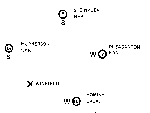
Figure 2: Prairie Network Case Map
Click on Thumbnail to see Full-size image.
5. The Tombaugh Survey
Table 2
Prairie Network Study
Summary of Sighting Identifications
STATE
O
NI
NO
total
NC
M
CI
II
conclusively
astronomicalinconclusively
astronomical
S Dak
0
0
0
5
2
0
3
2
Neb.
4
6
0
10
8
1
1
Kans.
3
9
1
14
9
1
0
3
1
Mo.
10
7
2
27
17
1
3
3
3
2
Iowa
3
2
1
11
8
0
2
Ill.
11
16
5
33
27
0
1
1
Okla
3
3
3
14
9
0
2
2
Total
34
43
12
114
80
2
4
14
4
8
% Total
30
38
11
70
2
4
12
100
67
by the telescope existed ... during 1956, or that any natural objects
have since entered these regions.
6. Scanning Photometers
7. Haleakala I
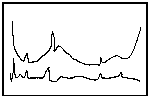
Figure 3: Haleakala I: Feb 11-12, 1966, 0005h (Hawaii Time)
Click on Thumbnail to see Full-size image.
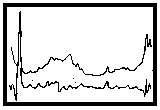
Figure 4: Haleakala I: Feb 11-12, 1966, 2350h (Hawaii Time)
Click on Thumbnail to see Full-size image.
Angle Z
HST
Azimuth
80°
2350
68°T
75°
0005
72°T



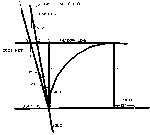
Figure 5: Haleakala I, UBO Data
Click on Thumbnail to see Full-size image.
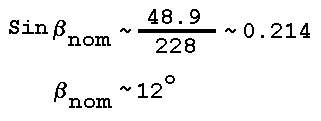
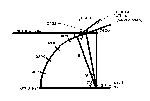
Figure 6: Haleakala II, UBO Data
Click on Thumbnail to see Full-size image.

Figure 7: Haleakala II, UBO Distances
Click on Thumbnail to see Full-size image.
8. Haleakala II
Lat.
Long.
Vandenberg
34.5°N.
120.7°W.
Haleakala
21.0°N.
156.0°W.
Table 3
Photometer Data of UBO Sighting
HST
SIGHTING
h
m
s
Elevation
Azimuth(Psi)
t (min.)
Delta Psi
1st
04
34
25
14°
47°
---
---
2nd
04
35
28
15°
41°
1.05
6°
3rd
04
37
45
16°
36°
2.28
5°
4th
04
38
37
17°
37°
0.87
-1°
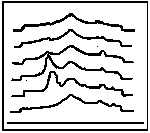
Figure 8: Haleakala II, Photometer Data
Click on Thumbnail to see Full-size image.
Table 4
Sighting Interval
Omega°
Omegar
d
Phi
Vav
Sin Beta
~Beta
1-2
6.2
+.3
-.2
0.108
+.05
-.03
1595
172
164
0.72
46°
2-3
5.1
+.5
-.1
.089
+.009
-.002
1356
121
53
0.23
13°
3-4
1.4
+1.3
-.4
.023
+.024
-.005
836
19
22
0.10
6°

Figure 9: Haleakala I, UBO & Earth's shadow
Click on Thumbnail to see Full-size image.
h ~ 638 sin 17° +
6382
8 x 6371
~ 194 km.
9. Radar
Table 5
TARGET
Wavelength
Mean cross-section cm2
Hawkmoth
10.7
1.0
Honeybee
10.7
3.0 x 10-3
Sparrow
10.2
15.0
71.5
2.5 x 102 (a)
3.5
1.9
Pigeon
10.2
80.0
71.5 (a)
11.0
Pigeon
3.5
15.0
3.5
1.1 head
100.0
broadside
1.0
tail
(a) Transmitted beam vertically polarized; received echo also
vertically polarized.
(Table taken from Glover (1966) and Conrad (1968).
Thus, the radar return from single birds in flight differs ... from
other possible point or dot targets, such as aircraft, swarms of
insects, several birds together, or small clouds or other
meteorological structures (Conrad, 1968).
WSR-57
Wave Length cm.
10.3 (5 and 2.5 cm. planed but not yet on order)
Pulse Length & Rep. rate
0.5 micro/sec at 658 pulses per sec. or 4.0 micro/sec at 164 pulses
per sec.
Peak Power Output K.W.
500
Beam Width
2°
Sweep Characteristics
Automatic, manual in altitude or azimuth at 0-24°/sec
Scopes
PPI, RHI, R, A
Range
464km.
Altitude
-10° to +40°
(Source: U.S. Dept of Commerce)
Editor's Note: Rows and columns reversed.
10. The Image Orthicon
11. Proton Magnetometers
12. Lasers
13. Observations and Comments
Table 6
Characteristics of Some Objects Observed in the Atmosphere
Meteors
Satellites and Satellite re-entries
Aircraft
Tornadoes
UFOs
Point source (P.S.) or extended object (E.O.)
P.S. unless fireball
P.S. unless re-entry
P.S. by night E.O. by day
E.O.
P.S. by night E.O. by day
Self-luminous
yes
reflected light yes (re-entries)
yes, navigation lights
yes?*
yes, at night
Luminance
high
low
low
low
low to high
Direction of motion-unpredictable, linear, ballistic or orbital
linear or ballistic
linear or orbital
straight or slowly curving
slowly varying
unpredictable
Electromagnetic effects, other than visual
some evidence exists**
none
none
possible but not established***
sometimes
Close approach to or contact with ground
infrequently
re-entry only
yes
yes
so reported
Distance to observer
many miles
many miles
from close to far
usually several miles
from close to many miles
**(Romig, 1963)
***(Vonnegut, 1968)
Table 6 (cont'd)
Characteristics of Some Objects Observed in the Atmosphere